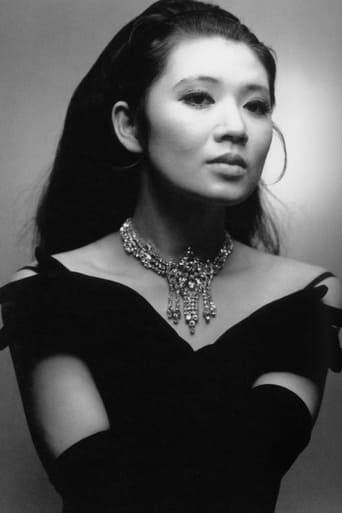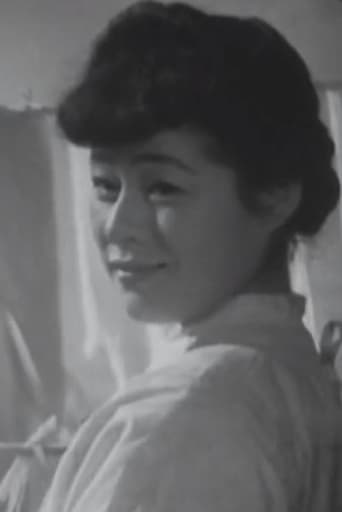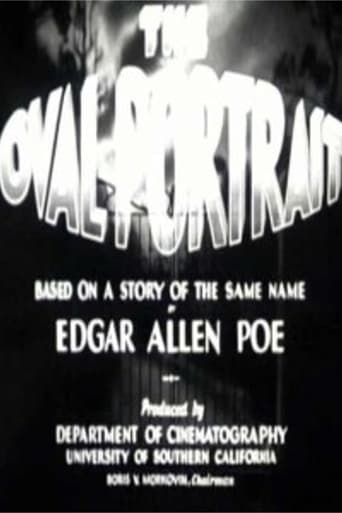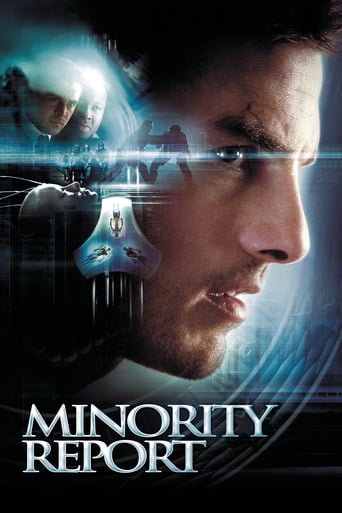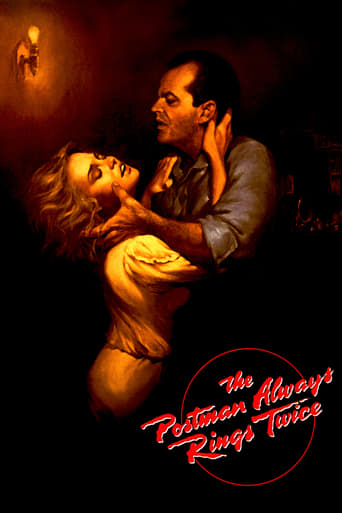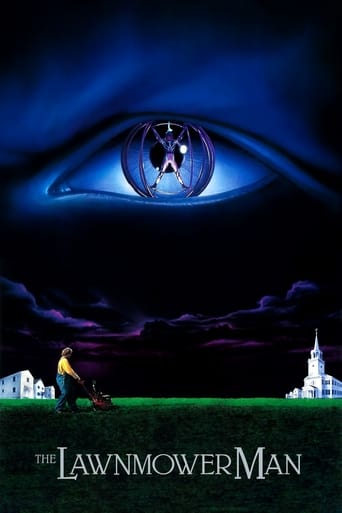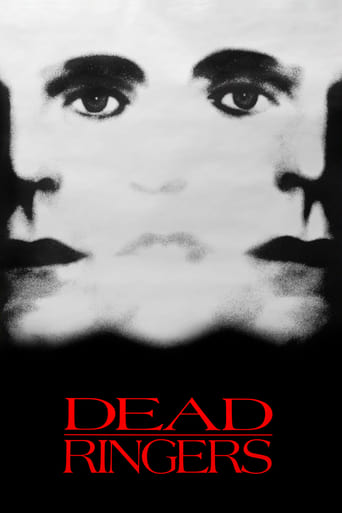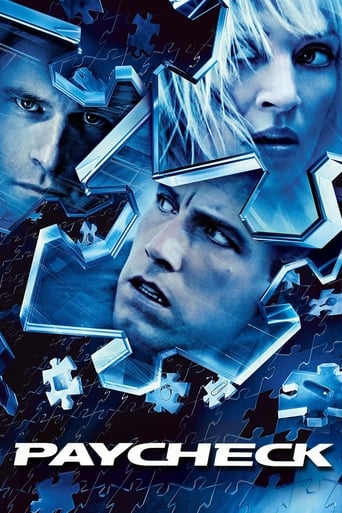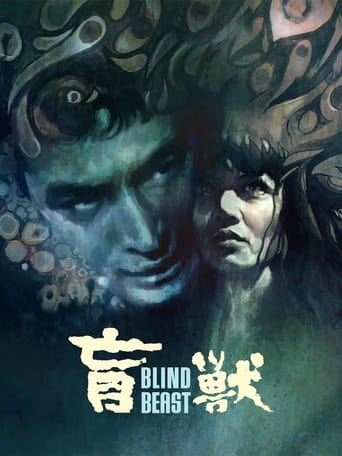
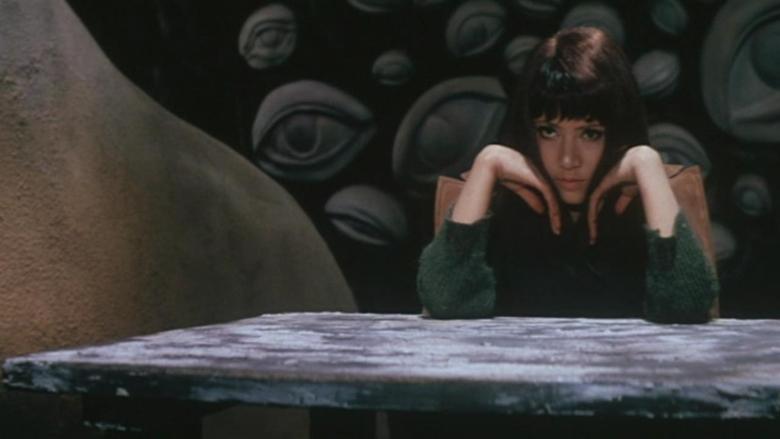
Blind Beast (1969)
A blind sculptor kidnaps an artists' model and imprisons her in his warehouse studio – a shadowland of perverse monuments to the female form. Here a deranged passion play of sensual and sexual obsession is acted out in world where sight is replaced by touch.
Watch Trailer
Cast


Similar titles
Reviews
Director Yasuzo Masumura's colorful career saw a bunch of genres, and from time to time he also dipped his toe into the pinku genre. Blind Beast, many years later gifted with a crossover with Dwarf Killer by Teruo Ishii, belongs to the ero-guro (erotic grotesque) subgenre of films which were inspired by the literary current of famed Japanese mystery writer Rampo Edogawa, who saw his influence in Poe. In fact, Blind Beast is an adaptation of Edogawa's homonymous book.The film has only three characters; a psychotic blind sculptor obsessed with physical touch, his semi-approving mother and a model they kidnap to make her his muse. It's a slow descent into utter sadomasochistic depravity, crossed with Oedipal Complex and Stockholm Syndrome. But it's not really a serious character study. In true ero-guro fashion, the story is absurd and the characters' actions are at turns totally bonkers. The film culminates in an absolutely insane bondage routine which has to be seen to be believed. There is little to no blood shown, but it's still highly disturbing. It ends somewhat on a cautionary note, as if the movie is trying to explore the darkest possible side of obsession and addiction to sexuality.One thing you may find odd is that there is almost no nudity. This seems really out of place in the final 20 minutes, but still, you have to understand the limitations of light pinku films. Another thing I found to be really strange is the beginning which shows the sculptor fondling a statue of the model and thus giving her phantom caresses, voodoo- style. This strange ability of his is never mentioned again, aside maybe from the very final scene, but it's still unclear how it fits into the initial scene, or if it does fit at all.The music is mostly composed of creepy ambiental sounds and a cool short jingle which plays 2-3 times, but the sets are another thing. This movie has one of the craziest sets I've ever seen. A claustrophobic warehouse with free-form artificial lighting. This hideout of the titular character has two huge sculptures of naked female bodies in the middle of the main room, and giant body parts made out of clay hanging on walls (eyes, noses, arms, boobs, legs...). It's pretty crazy. I wonder what went through the heads of those who were in charge of producing these setpieces.
Moju is ambitious art-house film. It's staged as homage to fine arts and for the most part theatrical. Artist's studio is huge, dark exhibition place for human limbs and parts of human body sculpt out of clay, with two giant naked female body forms in the center. That's the psychedelic stage where this story is to take place. I think it soon became clear there was one most likely scenario for me as viewer: to approach it on intellectual level. Blind Beast has a lot to offer visually, but it's stripped down in its core, an extreme psychology workshop with highly effective, post modern interior. I have noticed certain restraint here, it's not trying to evoke emotional response as primary goal.Blind sculptor (Michio) with slight Oedipal complex becomes fascinated with young s&m model. With the help of his mother he kidnaps the young girl (Aki) hoping to use her as model for his art. Things do not go quite as planned, turns out the girl is strong willed and stubborn with certain dislike of her new position. Battle of wills thus ensues. Using basic psychology she manipulates naive, asocial artist to gain his trust and up her chances for escaping the house. But, after several failed attempts she is forced to accept her fate and form a relationship with him.Both of them go through changes, each new step force them to adapt, and find a way to cope with the situation. It resembles a weird game, with ever changing dynamics between the two protagonists. It becomes apparent the girl, whom I first though was superficial or simply ordinary, shows considerable intelligence, and new found appreciation for the world of touch (the only world known to her captor), senses and darkly pleasures. And things escalate from there.Although protagonists are taking the realm of senses to extremes and turn pleasure into pain, most of violence happens off screen so Blind Beast's subtle and visually beautiful while demonstrating excessive, pathological desires and ideas. I first thought the titular Blind Beast is the sculptor, but have changed my mind during the film...twice. Having seen it, I don't think either of the characters are, I think the title refers to lust, surrender to senses, confirming there is such thing as too much of a good thing.
A blind sculptor Michio is fascinated by a beautiful body of a young model. On feeling a sculpture depicting her, he resolves to kidnap her with the assistance of his mother and imprison her in order to create a new type of sculpting relying only on touch. He succeeds in fulfilling his desire. Initially, the model is terrified and does not want to cooperate with the blind man. Notwithstanding, upon seeing his desperation, she agrees to stay, become his inspiration and even a lover so as to be capable of manipulating him and arranging her getaway.Blind Beast (1969) is frequently ranked among the most disturbing flicks ever made which should not be astonishing. This is not only one of the most twisted films ever produced, but also one of the most bizarre works. The story tackles such issues as unbridled human sexuality and obsessive love which leads to sadomasochism, thus to self-destruction. The script could be spoilt in hands of an untalented filmmaker, but not in Masumura's, the director of masterful Red Angel (1966), it is polished to perfection. Masumura, despite his tendency of compounding violence in his movies in order to render tackled problems even more visible, is aware of the screenplay's perversity and is generally interested in exploring the subject instead of shocking. While some scenes might be made in a repugnant way, Masumura executes them totally bloodlessly and evades gore. Hence mise-en-scène is quite subtle and the ensuing waves of cruelty just implied, not explicitly exposed. However, this is not the only reason why the direction is so brilliant. With this flick Masumura proves that he is an extraordinarily imaginative artist. The scenography of the Michio's studio is ravishingly bewildering and mesmeric. To the walls are attached sculptures of various parts of female body – ears, breasts, eyes, noses, mouths, legs and arms which seem to be omnipresent. In addition to this, there are two huge, artificial figures of a naked man and woman. All this gives this location, in which practically the whole story takes place, an extremely outlandish, ghoulish appearance and an unpleasantly claustrophobic climax. Another aspect that makes the content more oneiric is the narration of the model who recounts those events from the perspective of time. It is also remarkable how Masumura's picture keeps one's attention to the very end, despite such an ascetic, staid action and only three characters at director's disposal.The cast is quite decent, although it lacks any famous names to boast about. Eiji Funakoshi is pretty good as the sculptor, even though he seems to overact at times which isn't very disturbing though and these moments are few and far between. Mako Midori is very good as the charming model and probably gives the most impressive performance. Noriko Sengoku as the mother rather stays in the background, since her character is not that significant and feels more like a directional device to fill some plot holes and push the story further. Hikaru Hayashi's soundtrack mostly consists of some non-musical sounds in order to render the atmosphere more wicked and sleazy, while the minimalistic main theme is certainly pretty.It is difficult to recommend it to anyone. This is rather a movie to watch alone. It will certainly leave more sensitive viewers exhausted and possibly disgusted. Nonetheless everyone is likely to agree with the statement that it is a one-of-a-kind flick, regardless of the fact whether one has enjoyed it or not. With regard to open-minded cinephiles, this will be an unforgettable ride. As far as I am concerned, it is an audacious work of art that successfully reveals all darker aspects of human sexuality and should be hailed for its eminent uniqueness.
"Blind Beast" "Moju" (1969): Eiji Funakoshi, Mako Midori, Noriko Sengoku...Director Yasuzo Masumura, Screenplay/Story ...Rampo Edogawa, Yoshio Shirasaka.The films of 1969 were in many ways a revolution, a bold step forward into the future of cinema. Like the decade of the 60's, liberal attitudes were embraced, as was rebelliousness against convention and shock appeal was big. Graphic adult content, that is to say R rated and X rated material by today's standards, was bombarding the big screen and a new wave of cinema hit America never before seen even by adult audiences in the 40's and 50's whose films were always under the eye of the censors and were at most only mildly shocking or violent. Foreign films paved the way for this new type of shocking film, and other films from this time - coming from South America, Mexico, Europe and Asia, were bold in their excessive shock appeal. "Blind Beast", released in 1969 by Japanese Director Yasuzo Masumura is possibly the most graphic, the most sadistic, twisted, horrifying piece of veiled romantic art-house material. The art-house signature is all over it. Its lead character is a blind sculptor who is sexually frustrated and in pursuit of a life-long, impossible romance, there are many fine moments of cinematography that makes use of interesting camera angles, artsy in themselves, actual sculptures and mood lighting, primarily light colors and clarity at the start of the film and total darkness by the end of it.Though not everyone would call this a romance, the blind hero Michio (Funakoshi) is a blind man who has never known any real love from a woman and who is ostracized and isolated, living a lot like the Phantom of the Opera. Only his mother (Sengoku) cares for him. They quickly determine that he needs a woman, a bride and they kidnap a beautiful artist's model (Midori). At first, she is disgusted and horrified by her situation. Alone in a sunken warehouse, Michio repeatedly rapes her and they are both deprived of real food, clothes and contact with the outside world. This can easily be traced to similar stories like "Beauty and the Beast" and the fore-mentioned "Phantom". Michio quickly trains his kidnapped bride to respond to touch and to rely on her senses. She quickly becomes insane and goes blind. They are both now in a bizarre, sadomasochistic, symbiotic relationship in which he provides her with rough physical dominance which she craves. He tortures her, beats her, whips her, bites her, drinks her blood and eats some of her flesh. Before long, she equates physical pain with love. Surprisingly, Michio can still make sculptures. Before long, we realize that reality has set in. They are both insane and dying of lack of food, social contact and a real life. They descend into degradation and self-destruction. She demands that he chop off her limbs before she dies. This truly horrible story is good only because it is so out-of-this-world for 1969 and so bold and daring in its subject matter. Keep in mind that this is not for younger audiences. The scenes are graphic and intense. A film that is little-known, little appreciated and yet a sort of whispered-about cult classic, a story that may arouse some and disgust others. Nevertheless, being a Japanese foreign film, with much philosophical and Buddhist-like ruminations by the girl's voice-over, it is an art-house film nonetheless. The cinematography as mentioned is really interesting and as much a part of the story as the characters and their evil passion. Notice how seriously it takes itself for a film that could be reduced to mere pornography or "snuff" film. There is a strange sadness to this film, a tragic quality to it that makes it somehow more than just about the shock appeal. The shock element is still there and it's strong but it's a film with a powerful impact nonetheless. It's art-house. Just not to everyone's tastes.



